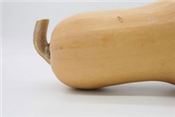Harvest Abundant Squash For Food, Decoration
Winter squash is a tasty, nutritious fall treat that comes in a variety of sizes, shapes, colors, and flavors. There are hundreds of varieties available to grow and enjoy on the dinner table.
“A few of the more popular winter squash include butternut, acorn, spaghetti, and butternut,” says Jennifer Fishburn, University of Illinois Extension horticulture educator serving Logan, Menard and Sangamon counties.
Butternut squash is one of the most popular. This long, pear-shaped squash is tan, with a thin rind that is easy to cut or remove with a vegetable peeler.
Acorn squash is a small squash that resembles an acorn and is available in a variety of skin colors, including dark green, gold, and white.
Spaghetti squash, as its name suggests, resembles pasta strands when cooked. The strands can serve as a low-calorie, low-carbohydrate pasta substitute.
Harvesting and storing winter squash
Squash, a fruit, is generally harvested in September or October and must be harvested before a hard frost. A light frost will kill the vines, but won’t harm the fruit.
“Unlike summer squash, such as zucchini, which is harvested in the immature stage, winter squash is harvested when the fruit is mature,”
Fishburn says. Their rinds are dull, dry, and hard and cannot be punctured with a fingernail. Rinds should be free of cracks and soft spots. Use caution not to injure the rind during harvest.
When cutting squash from the vine, leave a 2- to 3-inch stem. Avoid handling fruit by the stem since the weight of the fruit can cause the stem to break. Most winter squash, with exception of acorn and delicate, benefit from a curing process. To cure, place squash at a temperature of 70°F to 80°F for 10 days.
Winter squash have a long shelf life if stored properly. Acorn squash can be stored up to two months, butternut up to three months, and hubbard up to six months. Optimum storage conditions for most winter squash harvests is around 55°F with a 50 percent to 75 percent humidity in a cool, dark location with good air circulation. If possible, store squash in a single layer and keep fruit from touching each other. All winter squash except hubbards should be stored with stems attached.
Eating winter squash
Most winter squash can be baked, boiled, or steamed. Fishburn cautions that the hard, tough rind is a challenge for most cooks.
With the exception of spaghetti squash, winter squash is often eaten as a sweet or savory side dish. Squash can be flavored simply with salt and butter or with warm fall spices, such as cinnamon, ground cloves, nutmeg, or basil and sweetened with brown sugar, maple syrup, or honey.
Squash’s dense texture holds up well in soups, stews, chili, and casseroles. The flesh can also be used in pies, muffins, and cakes. ∆
JENNIFER FISHBURN: Horticulture Educator, University of Illinois

This unripe butternut squash will be ready to harvest in September or October when its skin has turned a golden hue and the squash skin is hard.
Photo credit Jennifer Fishburn.